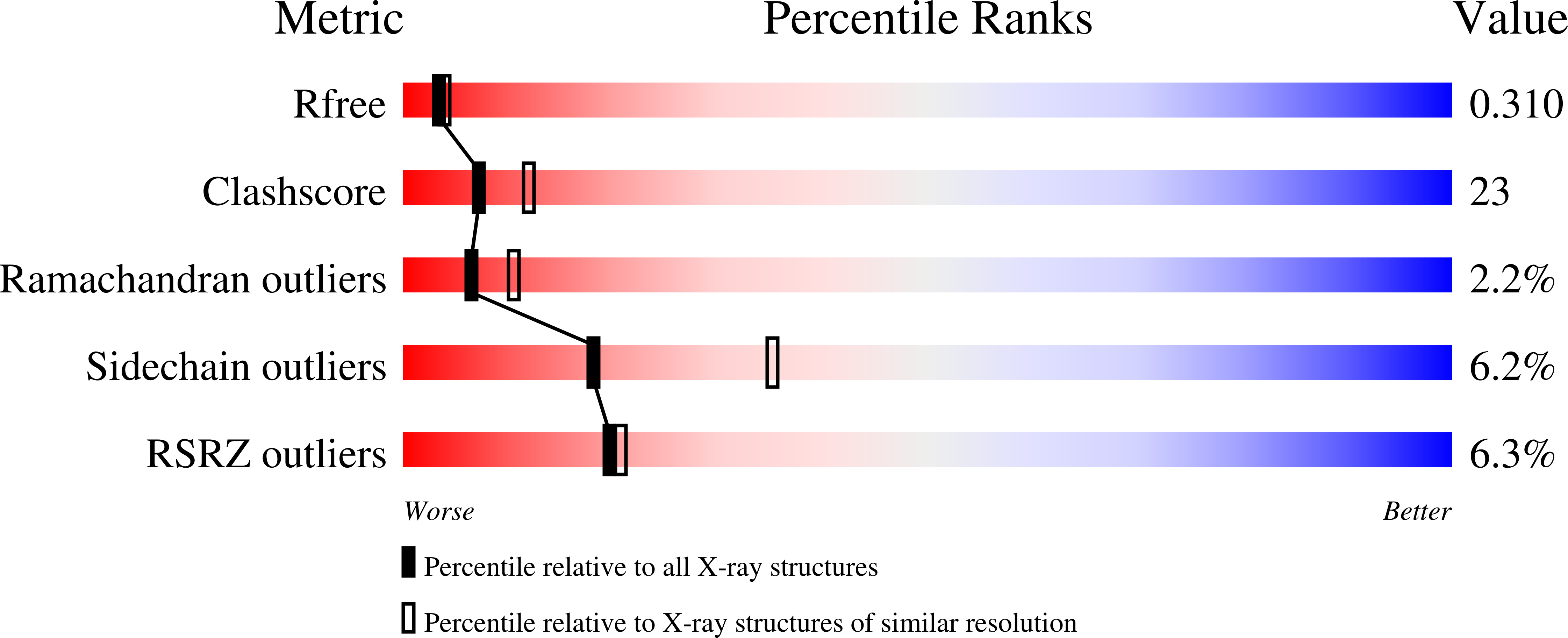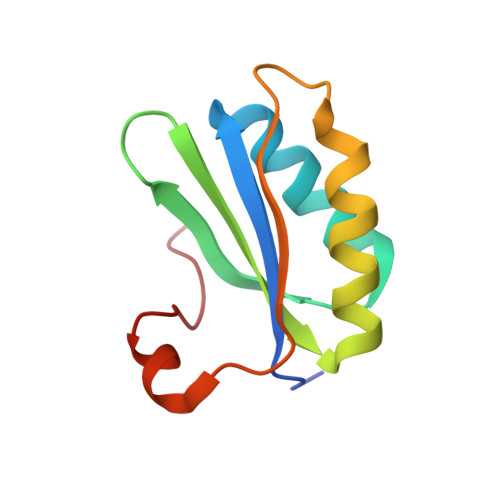Analysis of lattice-translocation disorder in the layered hexagonal structure of carboxysome shell protein CsoS1C
Tsai, Y., Sawaya, M.R., Yeates, T.O.(2009) Acta Crystallogr D Biol Crystallogr 65: 980-988
- PubMed: 19690376
- DOI: https://doi.org/10.1107/S0907444909025153
- Primary Citation of Related Structures:
3H8Y - PubMed Abstract:
Lattice-translocation or crystal order-disorder phenomena occur when some layers or groups of molecules in a crystal are randomly displaced relative to other groups of molecules by a discrete set of vectors. In previous work, the effects of lattice translocation on diffraction intensities have been corrected by considering that the observed intensities are the product of the intensities from an ideal crystal (lacking disorder) multiplied by the squared magnitude of the Fourier transform of the set of translocation vectors. Here, the structure determination is presented of carboxysome protein CsoS1C from Halothiobacillius neapolitanus in a crystal exhibiting a lattice translocation with unique features. The diffraction data are fully accounted for by a crystal unit cell composed of two layers of cyclic protein hexamers. The first layer is fully ordered (i.e. has one fixed position), while the second layer randomly takes one of three alternative positions whose displacements are related to each other by threefold symmetry. Remarkably, the highest symmetry present in the crystal is P3, yet the intensity data (and the Patterson map) obey 6/m instead of \overline 3 symmetry; the intensities exceed the symmetry expected from combining the crystal space group with an inversion center. The origin of this rare phenomenon, known as symmetry enhancement, is discussed and shown to be possible even for a perfectly ordered crystal. The lattice-translocation treatment described here may be useful in analyzing other cases of disorder in which layers or groups of molecules are shifted in multiple symmetry-related directions.
Organizational Affiliation:
Molecular Biology Institute, University of California Los Angeles, Los Angeles, CA, USA.














